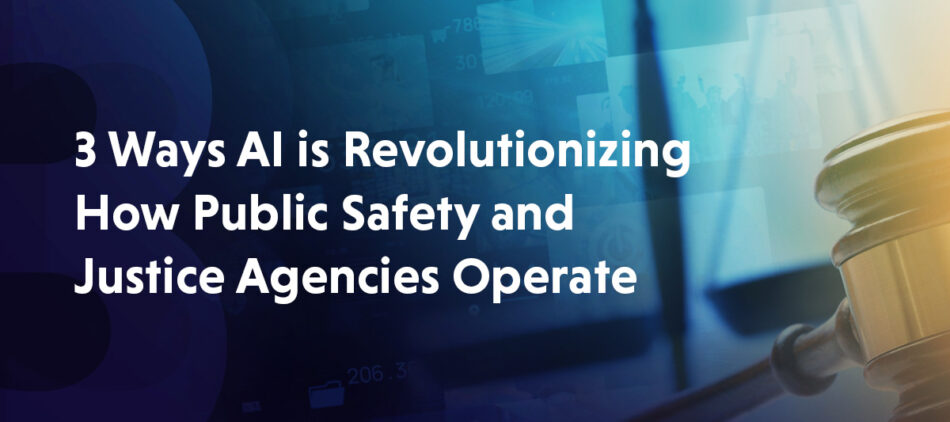
3 Ways AI is Revolutionizing How Public Safety and Justice Agencies Operate
Summary:
- Previous evidence-processing practices have made it difficult for agencies to keep up with FOIA requests and meet aggressive case deadlines
- AI adoption has started to gain traction in the public safety and justice sector to help automate many manual processes
- New AI technology applications accelerate evidence processing while maintaining the integrity of personally identifiable information (PII)
AI adoption in the commercial enterprise world has grown, with 52% of companies revealing that they have ramped up their plans to adopt AI. The government tends to follow the commercial world with new technology adoption, and now they are starting to catch up in AI. A key driver of this adoption is directly tied to new legislation and increasing demands to build transparency with the public, all of which have strained how government agencies used to work.
Overcoming the New Status Quo
Pressure from the public to increase transparency has led to legislation that requires agencies to respond to FOIA requests in 20 business days. In the past, the world was not inundated with video evidence. Now with the advent of smartphones and social media, body cam adoption, and other video sources, public safety and justice organizations have mountains of video evidence they have to redact.
Typically, this evidence would require a tech to review, frame by frame, each video file and manually redact things in the frame to protect personally identifiable information (PII). Redacting a 10-minute video can take an 8-hour workday. To achieve the scale required to meet these important demands, government agencies are turning to artificial intelligence (AI) to automate the evidence review process.
How AI Automates the Evidence Review Process
The three areas AI that help automate this process include translating and transcribing evidence to make content searchable, redacting video evidence, and tracking persons of interest across video files without using PII.
- Translating and transcribing evidence
When you have tight deadlines and need to surface the most relevant evidence quickly, AI can help you extract insights from audio and video evidence. By making keywords searchable like word documents, you can hunt for mentions or specific things within evidence to help you surface the most relevant pieces faster. This helps public safety and justice agencies scale their processing capabilities to handle record-high caseloads. - Redacting video evidence
Part of this process also means redacting evidence properly to ensure you meet privacy standards and don’t reveal anyone’s personally identifiable information (PII). AI can help redact long video files in minutes and save teams time so that they can focus elsewhere. In addition, it limits a team’s exposure to watching crime, reducing burnout, and improving overall staff well-being. - Tracking persons of interest across video files
In addition, AI can now help track persons of interest across multiple video files without violating PII by using facial recognition technology. Instead, new AI applications have solved this problem by preventing the use of AI for this use case by offering a more ethical and compliant solution. Now, investigations to track criminals and missing persons can rapidly accelerate investigations to apprehend suspects faster or find people within the first 48 hours.
Across all these use cases, Veritone is changing how public safety and justice agencies operate, enabling them to use AI easily and competently. Reach out to learn more about how we can help your agency overcome your challenges today.
Further Reading:
A Comprehensive Guide to Using AI in Law Enforcement